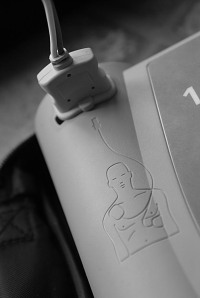Effect of Prehospital Cardiac Catheterization Lab Activation on Door-to-Balloon Time, Mortality, and False-Positive Activation
Prehospital Emergency Care January-March 2014, Vol. 18, No. 1 , Pages 68-75
Reperfusion of ST elevation myocardial infarction (STEMI) is most effective when performed early. Notification of the cardiac catheterization laboratory (cath lab) prior to hospital arrival based on paramedic-performed ECGs has been proposed as a strategy to decrease time to reperfusion and mortality. The purpose of this study was to compare the effects of cath lab activation prior to patient arrival versus activation after arrival at the emergency department (ED).
Methods. The authors performed a retrospective cohort study (n = 1933 cases) using Los Angeles County STEMI database from May 1, 2008 through August 31, 2009. The database includes patients arriving at a STEMI Receiving Center (SRC) by ambulance who were diagnosed with STEMI either before or after hospital arrival. We compared the cohort of patients with prehospital cath lab activation to those activated from the ED within 5 minutes of first ED ECG. Outcomes measured were mortality, door-to-balloon time, percent door-to-balloon time <90 min, and percentage of false-positive activations.
Results. Prehospital cath lab activations had mean door-to-balloon times 14 minutes shorter (95% CI 11–17), in-hospital mortality 1.5% higher (95% CI −1.0–5.2), and false-positive activation 7.8%, (95% CI 2.7–13.3) higher than ED activation. For prehospital activation, 93% (95% CI 91–94%) met a door-to-balloon target of 90 minutes versus 85% (95% CI 80–88%) for ED activations.
Conclusion. Prehospital cath lab activation based on the prehospital ECG was associated with decreased door-to-balloon times but did not affect hospital mortality. False-positive activation was common and occurred more often with prehospital STEMI diagnosis.
http://informahealthcare.com/doi/abs/10.3109/10903127.2013.836263

